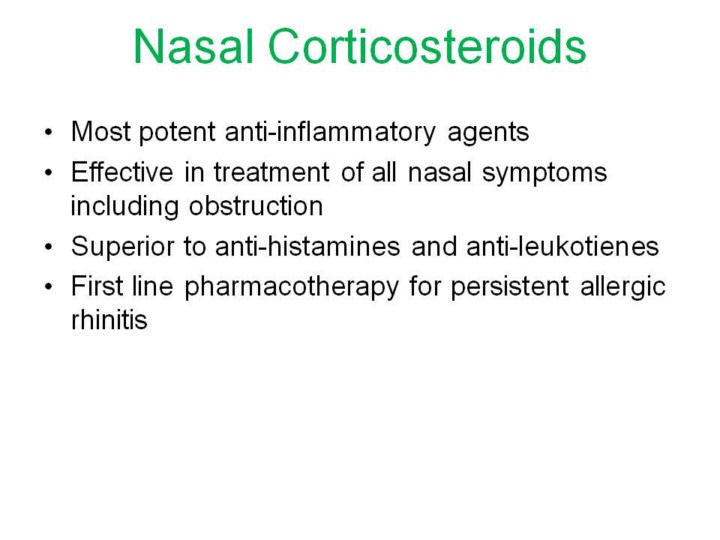| front |1 |2 |3 |4 |5 |6 |7 |8 |9 |10 |11 |12 |13 |14 |15 |16 |17 |18 |19 |20 |21 |22 |23 |24 |25 |26 |27 |28 | 29 |30 |31 |32 |33 |34 |35 |36 |37 |38 |39|40 |41 |42 |43 |44 |45 |review |
 |
Intranasal corticosteroids may be divided into first, second, and third generation preparations. These products are equally efficacious, although the total bioavailability (oral and nasal) of second and third generation intranasal steroids is markedly lower than that of first generation agents, resulting in lower risk of systemic effects First generation: beclomethasone (unknown bioavailability), and flunisolide (40 to 50 percent bioavailability). Second generation: budesonide (10 to 34 percent). Third generation: fluticasone propionate (<2 percent), mometasone furoate (undetectable), and fluticasone furoate (<1 percent). — Glucocorticoids inhibit allergic inflammation in the nose at many levels These agents downregulate inflammatory responses by binding to intracellular glucocorticoid receptors in the cytoplasm of inflammatory cells. The receptors undergo conformational changes upon activation, entering the cell nucleus where they bind with glucocorticoid response elements located on antiinflammatory genes. These activated genes transcribe messenger RNA for antiinflammatory proteins. At the same time, activated glucocorticoid receptors suppress the transcription of most cytokine and chemokine genes.
|